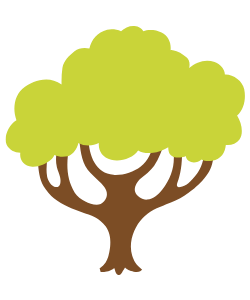Diseased or badly pest-infested trees can't always recover. In some cases, it is better to remove the tree, as this can prevent the problem from spreading to other trees in your yard. Special steps may be necessary when removing diseased trees.
1. Spread Concerns
The chances of the disease spreading from the affected tree to other plants in your yard depend on the specific disease or pest. Often, the main risk is trees of the same species that are on or near your property. These trees may need to be protected prior to removal with a pesticide or disease foliar spray treatment to prevent spread in case the diseased tree comes in contact with the nearby trees during removal.
If there is a concern about pests or disease pathogens spreading to understory plants and shrubs, your tree service may recommend covering them with tarps during removal. This will protect them from falling debris, such as twigs and leaves, which will minimize the chances that the problem will spread even after the tree is removed.
2. Unpredictable Wood
Any tree can behave unpredictably during removal, but a diseased or insect-infested tree is more prone to issues. Branches may break off unexpectedly, or the trunk may fracture and split due to hidden internal damages. Depending on the extent of damage, the tree may not be able to support much weight, either. This can affect the techniques and tools that can be used.
The standard professional tree removal method is often to scale the tree using climbing gear, cutting off the branches from the bottom up. Then the trunk is sectioned from the top down and lowered to the ground with rigging. With a diseased tree, extra caution and safety rigging may be necessary to do this task. Alternatively, your tree service may opt to use cherry pickers and bucket trucks instead of climbers for the job. Extra safety precautions, such as cordoning off a larger area in the event the tree falls unexpectedly, may also be needed.
3. Site Sanitation
After the removal is a sensitive time, as some pathogens may still be active in the soil. The first step is to make sure all the wood and branches are collected and removed. If the risk is high, your tree service may not mulch the wood on site as that increases the chances of infected sawdust affecting other nearby trees.
Typically the stump is ground down after tree removal. In the case of some diseases, this can do little more than spread infected sawdust throughout your lawn. Your removal service may recommend digging out the stump instead. This is a longer and more difficult process, but it will get rid of most of the sources of disease.
Contact a tree removal service for more help.

 Trees can make a yard look beautiful and natural, but only if they are in good condition. Do you know how to best care for your trees? Some do best with mulch, others thrive in dry soil, and most require pruning, at some point or another, to ensure they grow evenly.
If tree care seems a little foreign to you, then you've come to the right place. This website features articles that will help you learn how to better care for your trees. You'll also learn about hiring a tree service if you prefer to have professionals do the work for you.
Trees can make a yard look beautiful and natural, but only if they are in good condition. Do you know how to best care for your trees? Some do best with mulch, others thrive in dry soil, and most require pruning, at some point or another, to ensure they grow evenly.
If tree care seems a little foreign to you, then you've come to the right place. This website features articles that will help you learn how to better care for your trees. You'll also learn about hiring a tree service if you prefer to have professionals do the work for you.